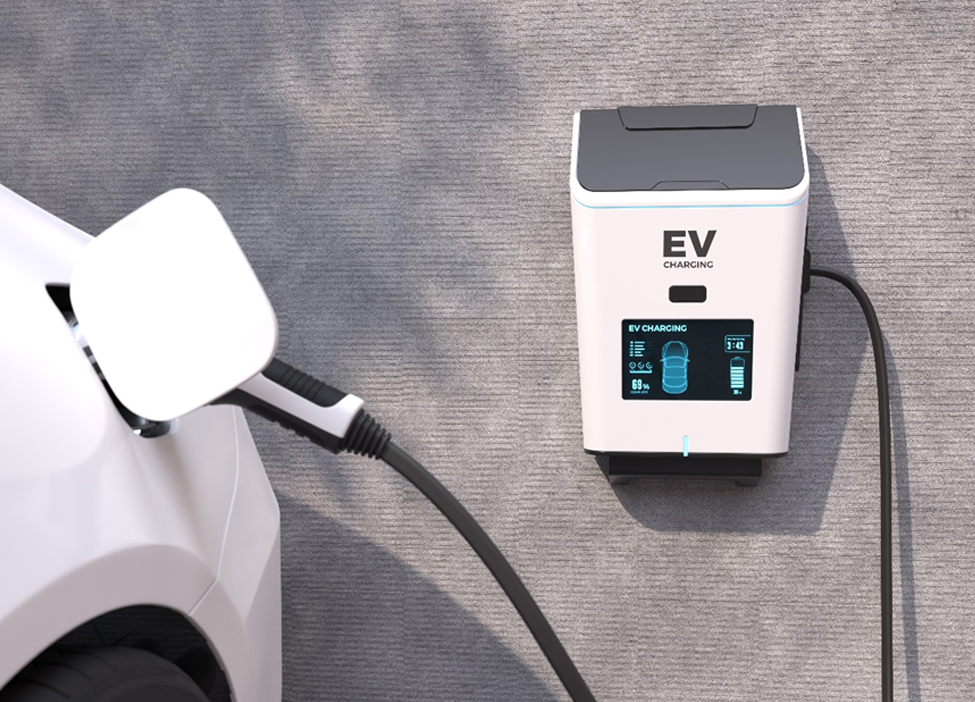Summary
Charging an electric car can be more problematic than you know. Each vehicle has dedicated chargers (CCS1 or NACS) and battery capacities, so you must be careful when charging to ensure you don’t use the wrong charger and damage your battery. Using the right charging station and not overcharging is one way to protect your EV battery and ensure it lasts longer.
Tercero Inc. offers EV charger installations, the needed infrastructure to ensure optimal operating conditions for the chargers, and the inevitable maintenance and repairs when that time comes.
Table of Contents
Introduction
Whether you’re new to electric vehicles or want to learn more about EV charger installation, this guide covers everything you need to know. From the type of charger to charging levels and electric car charging costs, we’ve got you covered.
If you’re looking for reliable EV charger installation services in Los Angeles, Tercero Inc. provides commercial and industrial installations. These chargers make it easier for electric car owners to charge and travel conveniently.
Let’s begin.
What is EV Charging?
EV charging is the process of replenishing an electric vehicle’s battery by connecting it to an external power source. Unlike gasoline-powered cars, electric vehicle charging can be done at home, work, or public charging stations, making it more comfortable and convenient for users.
Thanks to modern technological advancements, we have seen vast progress in charging infrastructure, improving the charging time and increasing the distance cars can travel.
Various charging options are available, and EV owners need to understand the basics, as this affects their trips and choice of electric vehicle.
Types of EV Charging
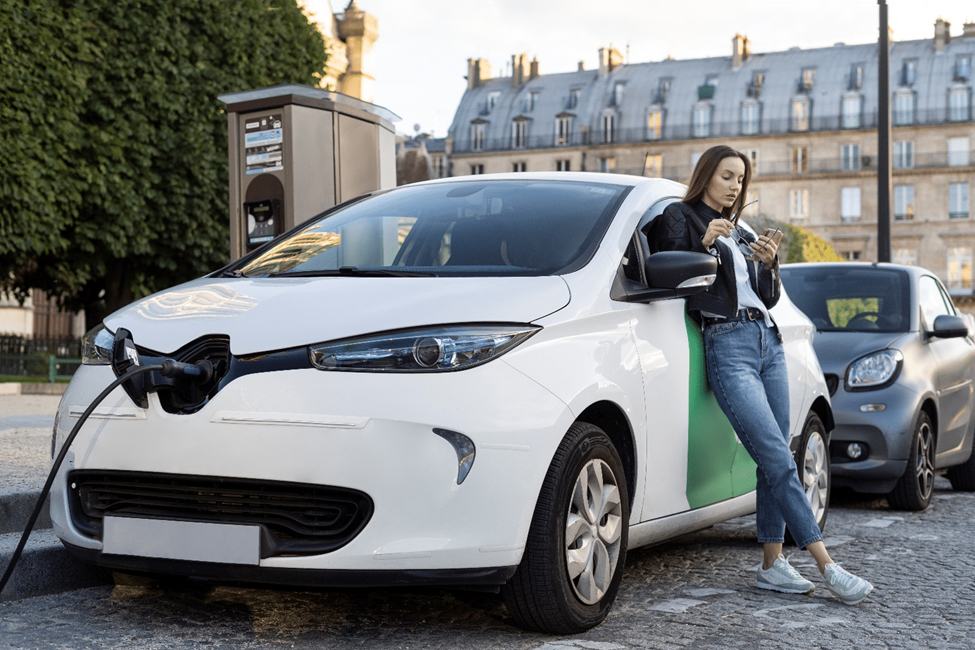
One of the most important things to know about EV charging is that there are three main types. They are level 1, level 2, and level 3 (Also known as fast charging).
- Level 1: This is the slowest charging type of the bunch but can usually be plugged into an appropriate outlet. Unlike level 2 and 3 charging stations, slow chargers can take 12+ hours to charge your electric vehicle fully. Due to their slowness, they are usually found at homes or workplaces. Your typical slow charger provides 2.2kW to 6kW, depending on the plug.
- Level 2: This type can fully charge your electric vehicle in three to four hours. The typical fast model provides 7kW, but if you find new models that allow 22kW, you might be able to reduce the charging time to a couple of hours.
- Level 3: This is the fastest type of charging. Level 3 charging provides a quick, direct current to recharge your electric vehicle as fast as possible. Though the rate of recharging sometimes depends on the model of the EV, you can typically get your EV up to 80% in just 20 minutes.
Charging Levels Explained
Most drivers are familiar with the different grades of gasoline, like regular, plus, or premium. The same classification applies to electric vehicles. Unlike grades, EV charging is classified according to levels, which describe how quickly a charger will recharge an EV battery.
And similar to gasoline, the higher the level, the more expensive the electric car charging costs.
There are three levels of EV charging. They are:
1. Level 1 Charging
Level 1 charging is the slowest charging level for electric vehicles. Most manufacturers include level 1 charging equipment with new cars. This equipment can be plugged into your regular 120V household outlet.
While level 1 charging can be very convenient, its slow charging speed makes it inefficient for many use cases. It works for those who do not drive very much or can be used as a backup for your vehicle in between other charging methods.
Although charging speed differs per vehicle model and specifications, other factors, including weather conditions, can affect your EV’s charging speed. The charging equipment will replenish your battery with about four to five miles of range per hour.
Note: You should avoid plugging your charger into a cord extension when charging at home. The wire’s additional length creates resistance that may overheat the extension cord.
2. Level 2 Charging
Level 2 charging is noticeably faster than level 1, depending on power output and vehicle specifications. Although these charging stations are often found in public, commercial, or workplaces, we recommend having one at home if you own an EV.
Installing an EV charging station at home can be expensive, considering that you need dedicated hardware and an electrician to upgrade your home’s electrical panel. However, this investment will offset future electric car charging costs and offer convenience.
The charging rate of level 2 chargers varies according to the hardware on your car and the charging equipment. A typical 240-volt, 24-amp unit can provide about 6kW per hour. However, this rate can go up to 80 amps and 19.2kW per hour with the proper hardware.
The more powerful level 2 chargers are well-suited for homes, offices and public spaces where people spend extended periods of time and can wait for a few hours to get a charge.
3. Level 3 Charging (DC Fast Charging)
Level 3 or DC fast charging is the fastest electric vehicle charging mode. This charging level is the most efficient and suited for long trips, as it can usually get a full charge (200+ miles) in just 30 minutes.
Unlike level 1 and 2 charging, the level 3 hardware is more sophisticated and capable of handling higher voltage charges (400 to 800 volts). The Tesla Supercharger network is the best example of a level 3 charging station.
The charge rate ranges between 50kW and 500kW, depending entirely on the vehicle’s capacity. If your car can only handle 50kW, it will only charge at that speed, even if plugged into a station capable of topping out at 500kW.
Types of EV Chargers
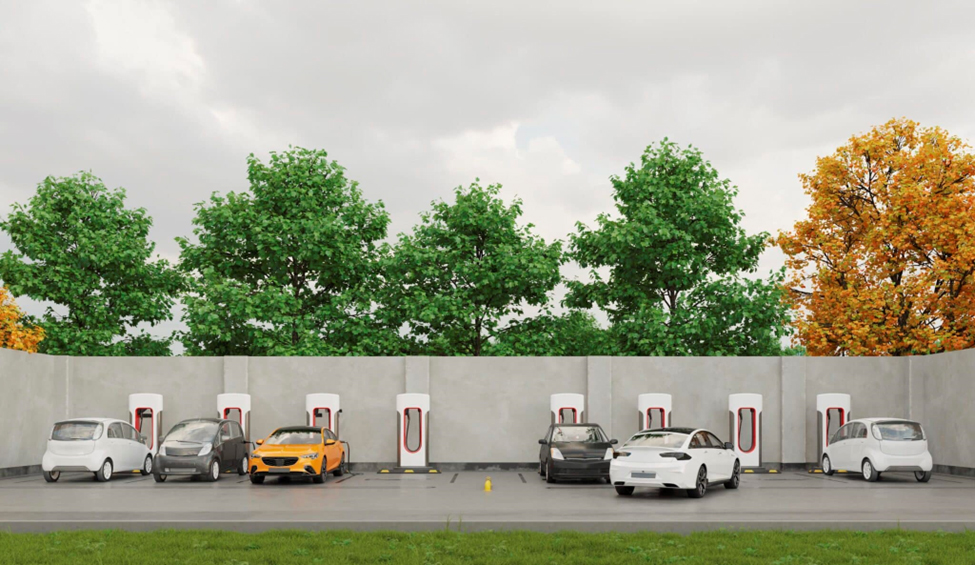
1. Pedestal Chargers
Pedestal chargers mounted on a pedestal or stand. They are often placed in public charging stations, shopping centers, and other high-traffic areas.
Pedestal chargers offer easy accessibility, visibility, durability, safety, and convenience.
- Accessibility: Drivers can charge their cars easily.
- Visibility: Pedestal chargers are easy to spot while on the road.
- Durability: These chargers are built for heavy use and harsh conditions.
- Safety: They have built-in safety measures such as automatic shut-off and ground fault protection.
- Convenience: They have easily accessible features like credit cards, screens, and charging cables.
2. Wall-Mounted Chargers
As the name implies, wall-mounted chargers are mounted directly to a wall, typically in a garage or parking lot. These chargers are popular among EV owners who want a convenient and space-saving solution.
Some benefits of wall-mounted chargers are space-saving, easy installation, convenience, and durability.
- Space-saving: Wall-mounted chargers are compact and don’t take up valuable floor space, making them well-suited for homes and office parking lots.
- Easy installation: This EV charger installation is relatively simple compared to other charging posts.
- Convenience: Because of their small sizes, they are often installed near a garage or parking spot, making it easy to plug in and charge your car.
- Durability: They are built to withstand outdoor dangers and weather conditions.
3. Public Charging Stations
Public charging stations are electric vehicle chargers available to the general public. They can be found in various locations, including shopping areas, parking garages, rest stops, gas stations, public parking lots, and government buildings.
These stations offer various options for electric vehicle owners, easy accessibility, and network connectivity for monitoring and maintenance. Types of public charging stations include:
- Level 2 (240V) Chargers
- DC Fast Chargers
- Tesla Superchargers
- Universal Chargers
Private Charging Stations
Private charging stations refer to electric vehicle chargers installed on private property. Popular locations for these stations are home garages, driveways, parking lots of private businesses, apartment complexes, and condominiums.
These stations offer a convenient and comfortable way to charge your vehicle. They are restricted to authorized individuals and often have lower EV charging costs than public stations.
Types of private charging stations include:
- Level 2 (240V) Chargers
- DC Fast Chargers
- Tesla Wall Connectors
- Universal Chargers
- Smart Chargers
Installation of EV Chargers
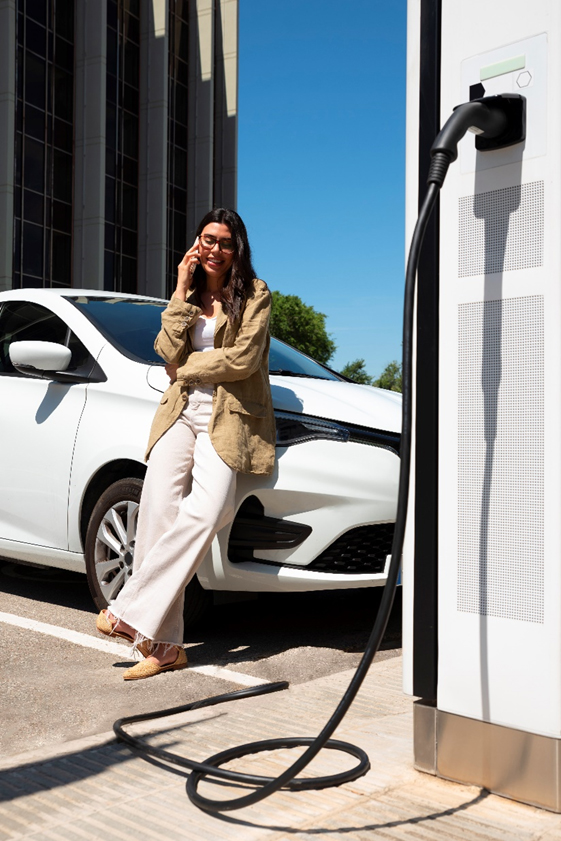
If you own an electric vehicle, you should also look into an affordable EV charger installation expert to ensure your car never runs out of juice. EV charger installation can be done at home or in public and commercial spaces.
1. Home Installation
Installing an EV charger at your home is cost-effective, efficient, safe, and comfortable. However, there are some considerations for a successful home installation. They are:
- Evaluate your electrical capacity: You should consult an electrician to determine your home’s electrical capability for EV charging. If your electrical system can not support the charger, your electrician will advise you to upgrade the system or optimize your energy usage to enable EV charging.
- Choose a charger type: You should purchase one suitable for your EV and home’s electrical system.
- Select a location: Choose a location for the charger. It should be close to your parking spot and protected from the elements.
- Get an electrical permit: You must get one before the installation begins. If an electrician will be doing the work, they should apply for an electrical permit. You should also get a permit if you install the charger instead.
- Install the charger and complete your permit: Install the EV charging station and get your electrician to complete the permit process. However, if you installed it by yourself, you must submit a declaration form after completing each phase of work.
2. Public and Commercial Installation
Considerations for installing EV chargers in public spaces include:
- Install high-power chargers: You should install chargers that can quickly charge vehicles.
- Install multiple chargers: Commercial EV chargers should be able to power two cars at once and it is recommended to install multiple chargers per location to ensure availability.
- Ensure the chargers are accessible: They should be positioned so everyone can see and utilize them easily.
- Include safety measures: The chargers should have built-in safety measures.
- Plan routine maintenance: You should plan routine maintenance and inspections for the chargers.
The Importance of Charging Speed
Charging speed is an essential factor to consider when charging an EV. The reasons why speed is critical are:
- Convenience: Faster charging time means less waiting time for drivers
- Cost savings: Faster charging significantly reduces electric car charging costs, especially for high-mileage drivers.
- Extended range in shorter time: If you’re on a road trip and need to charge your vehicle, you should be able to return in 30 minutes and drive at least another 200 miles before recharging.
Factors Affecting Charging Speed
1. Battery capacity
Battery capacity refers to an EV battery’s capacity to store energy. A larger battery capacity will take longer to charge than a smaller one. A small battery, for example, would take less time to fully charge, while a larger battery will take more.
2. Charging station power
A home charging station provides lower output, resulting in a slower charging speed, while a public station that offers high output can offer ultra-fast speed.
3. Temperature conditions
Temperature extremes (both hot and cold) can affect the battery’s chemical components, thereby affecting charging speed. Moderate temperatures are the optimum conditions for charging.
4. Battery health
As batteries age, their capacity to hold a charge also reduces, slowing the charging speed. To protect your battery’s health, avoid charging up to 100% or completely depleting the battery power.
Charging Speed vs. Battery Health
Contrary to popular belief, fast charging does not affect battery life, especially if good charging practice is followed. Keep your electric car charged between 20 and 80% of its full capacity to ensure a long and healthy battery life.
Also, keep out of extreme weather conditions, whether hot or cold.
The Future of EV Charging
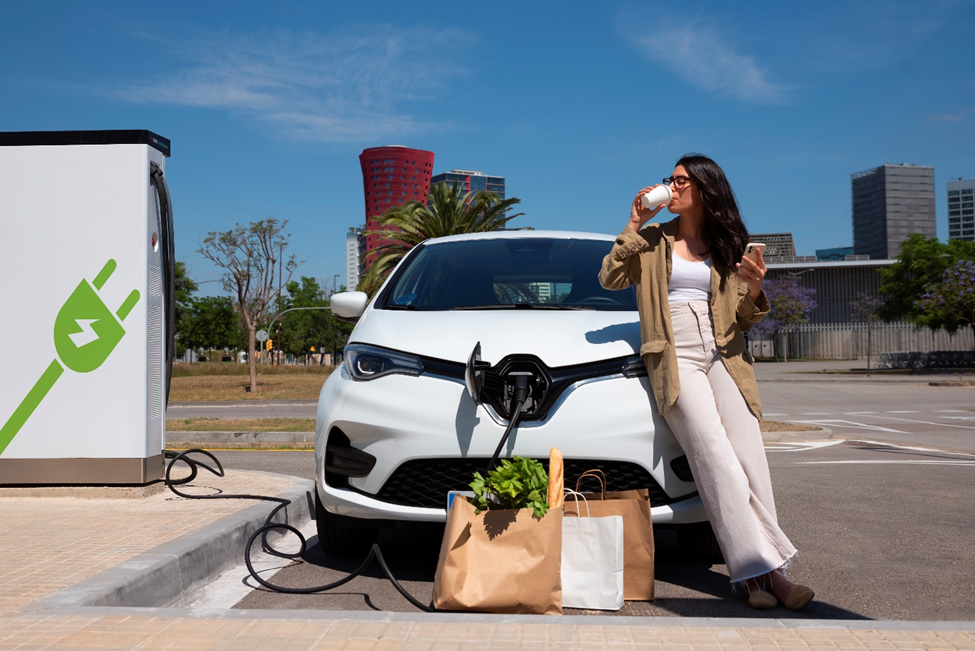
Electric vehicles (EVs) are the future of modern transportation, and their charging components will be part of that revolution. Technology will keep accelerating, increasing the charging speed of EVs and making them more suitable for long-distance driving.
Enhancements in solar technology, wireless charging, and smart charging will also maximize charging, making energy top-up easy and smooth.
All things considered, EV charging has a promising future that emphasizes sustainability, ease of use, and innovation.
Conclusion
Electric car charging infrastructure is still in its infancy and things will change drastically over the next few years. For now, the best charging solution is the one that suits your lifestyle and driving needs. If you have any questions about EV charging or if you are looking for the best EV charger installation, you should contact Tercero Inc. now.
FAQs
EV charging involves connecting your electric vehicle’s charger to a dedicated power outlet to recharge its battery.
In most cases it should not matter if you are charging inside or outside. However, extreme temperatures can affect your EV battery, so it is better to charge it in a place that is protected from harsh temperatures.
Slow EV charging can result from larger battery capacity, temperature conditions, battery health, or the charging infrastructure not being powerful enough to support fast charging.
No, fast charging does not affect the health of an EV battery as long as healthy charging procedures are maintained.
An EV charger has three charging levels: Level 1 (slow charging), Level 2 (average speed charging), and Level 3 (DC Fast Charging).

